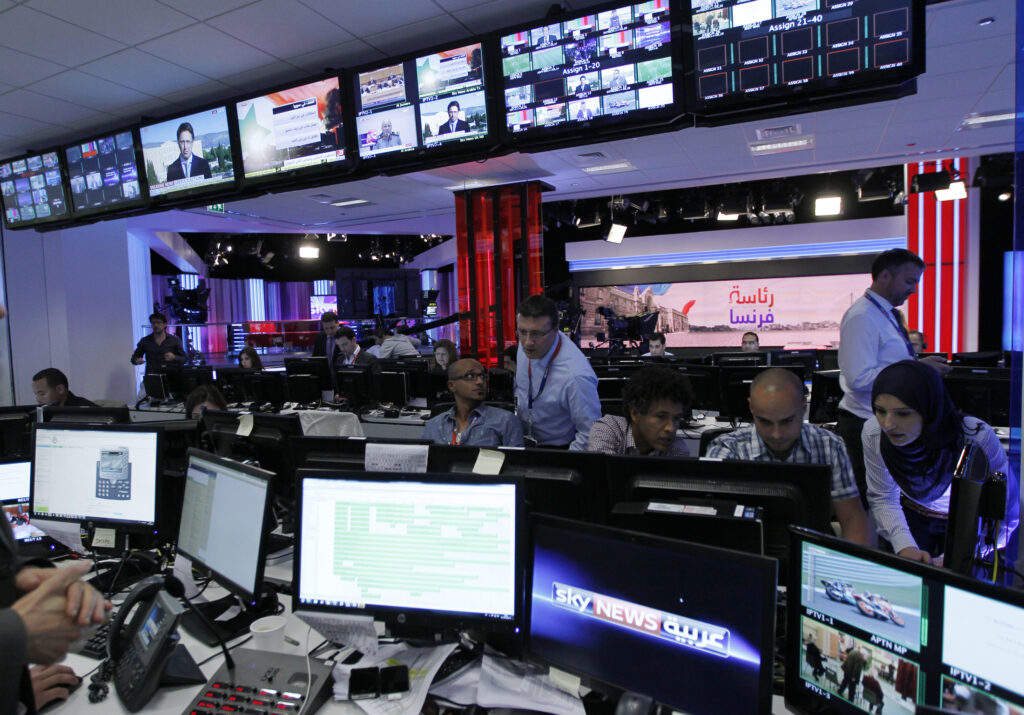
Be it rising sea levels and typhoons in South East Asia, coastal floods and heat in South Asia, or the shrinking islands around the Pacific Ocean, climate scientists have designated the APAC region to be the most vulnerable to climate-induced devastation.
But how much do we know about the people in these areas?
Much has been written about the doom and gloom surrounding the land, the sea, the warm temperatures and the need for climate adaptation and mitigation, but a news story carries greater impact when journalists add a human angle to it.
“We talk about saving the planet, but essentially it is about saving the people,” said Laurie Goering, Climate Change Editor at the Thomson Reuters Foundation.
Goering was speaking at a webinar titled ‘Building Resilience: Climate Crises and Green Transition’ to help journalists strengthen their climate coverage. It was the second of a four-part webinar series on ‘Media’s Role in a Sustainable Recovery in Asia and the Pacific’ hosted by the Asian Development Bank and the Thomson Reuters Foundation. The full recording can be viewed here.
“We need to start writing these stories so your neighbor, or your mother, or people around you can really understand them and engage with them,” said Goering. “We need to keep telling people stories and really taking people to the frontline, and let them see for themselves what’s going on and draw their conclusions.”
According to a 2020 McKinsey report on Climate risk and response in Asia, by 2050, parts of Asia may see increasing average temperatures, lethal heat waves, extreme precipitation events, severe hurricanes, drought, and changes in water supply, based on RCP 8.5 (Representative Concentration Pathways, a baseline of carbon concentration).
Who are the people living in such disaster-prone areas? Have they migrated? Have large areas become uninhabitable? How are the farmers dealing with soil erosion and heat? Has technology improved their lives? Are they not eating the same fruits and vegetables they used to? Is there a shortage in raw material supply?
People-driven stories are in plentiful supply when it comes to climate adaptation, especially if journalists were to pay close attention to the role of migration, according to Dr. Parag Khanna, a climate expert and author who recently released his new book ‘Move: The Forces uprooting us’.
“Most of the human population lives in Asia … and it is the region that is going to be the most affected; it has the largest source of greenhouse gas emissions, largest number of people who are poor, and vulnerable. All of this is in Asia, so Asians need to care more than others,” said Khanna, delving deep into ‘depopulation in green zones’ explaining how more people are moving into crowded cities in search of financial security and a brighter future, leaving behind greener pastures (literally).
Migration is again a people story. These could be refugees who fled war-torn countries where they had initially moved fearing the wrath of erratic weather in their rural settlements, or farmers who relocated to cities because of food security concerns, or even people abandoning coastline areas as swathes of lands shrink around them.
Another people-related concern arises when local reporters don’t add their own voices into an international story, said Lagipoiva Cherelle Jackson, a Samoan journalist and climate reporter for the Earth Negotiations Bulletin, and editor of Pacific Environment Weekly.
“My tip would be – as a Pacific Islander or as a frontline reporter – wherever you are covering the story from the Global South, this is your story as well. It is the story of your people, of those that you know, and are future generations of your country in your region,” said Jackson. “Do justice to it by using your voice as well and the experiences that you have.”
The Pacific islands, where 14 small islands are home to a little over 2 million people, is yelling out for attention as their lands cave into the seas. A strong message was sent during COP26 by Simon Kofe, the Tuvaluan Minister for Justice, Communication & Foreign Affairs, who gave a speech standing in knee-deep waters to draw attention to the island nation’s challenge of rising sea levels.
“In the Pacific we haven’t had the numbers to merit global coverage and that’s a fundamental issue with news coverage,” said Jackson. “So that’s why the stories, the nuances, and the human face of climate change, for islands like Tokelau, Tuvalu, Kiribati, Republic of The Marshall Islands, they actually stand to lose their entire nations … it’s not really large nations, it’s low lying islands, but they stand to lose the sovereignty, their statehood, the identities that come with it, the cultural rights and all of the entitlements, maritime boundaries and their maritime resources.”
Climate scientists have warned that high risk areas are ill prepared, and the United Nations Chief has called the latest report by Intergovernmental Panel on Climate Change (IPCC) as “a code red for humanity.”
“The number of people who are already displaced by climate related phenomena equals the number of people displaced by economic dislocation or political violence, and it is not getting enough attention,” said Khanna. “They (Asians) are a driver of climate change and they are the primary victims of climate change, and they, therefore, must take the bull by the horns and adapt much more quickly.”
If every climate story begins and ends with a human angle, be it the problems the people are facing or the solutions they are providing to combat the crisis, it will no longer be a journalism beat that requires dumbing down of jargon. Instead, it will be a human-interest story that will compel readers and viewers to make a difference to people’s lives, thereby saving the planet.
“Climate actors” provide interest, readership, information and ample takeaways to suit trans-channels of news dissemination, and be understood by everyone from baby boomers to millennials to the Gen Z cohort.
“The truth is climate change is now affecting lots of things people are interested in, whether it’s politics or investing, sports, business, travel, fashion, finance, lifestyle, agriculture, all of those beats for a journalist now has a lot to do with climate change, and trying to do things in a more sustainable way that’s good for the climate and nature,” said Goering.
Watch the entire webinar and panel discussion here.
Kavita Chandran is a journalism trainer with the Thomson Reuters Foundation and the moderator of the four episodes in the ‘Media’s Role in a Sustainable Recovery in Asia and the Pacific’ webinar series. Click here to register for the upcoming episodes.
More News
View All
AI Company Data Initiative drives transparency on corporate AI adoption
Now open for company…
Read More
Winners of the 2025 TrustLaw Awards Announced
This week marks the announcement of the 2025 TrustLaw Awards winners,…
Read More
How the Foundation is supporting LGBTQ+ communities worldwide
Over the last year, the Foundation has…
Read More
World Press Freedom Day: the need for the equitable and ethical adoption of AI
AI will be…
Read More
Case study: How an exiled Russian newsroom is using AI to combat news fatigue
Our Media in…
Read More
Five takeaways from the 2025 International Journalism Festival in Perugia
Remarkable solidarity…
Read More
How ‘foreign agent’ laws are silencing independent media
We explore the growing threat of ‘foreign agent’…
Read More
Unpacking the regional trends of the Index of Pro Bono 2024
We take a look at the long-term trends on pro…
Read More
2024 Index of Pro Bono findings revealed
The 2024 Index of Pro Bono, compiling comprehensive data representing nearly…
Read More
Journalists cautiously optimistic about the effect of AI on the profession, our new report finds
Our new TRF Insights report sheds light on the opportunities and challenges of AI…
Read More

